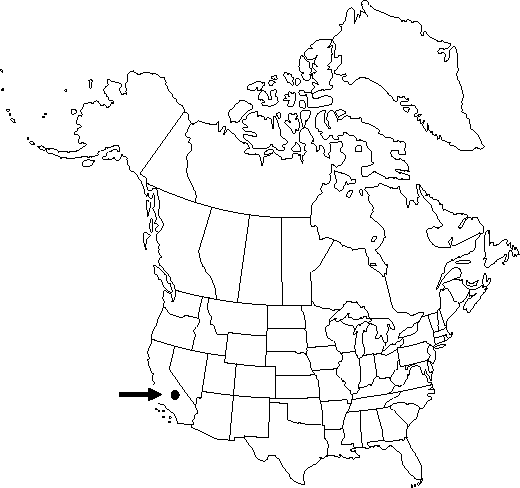Dicentra nevadensis
Proc. Calif. Acad. Sci., ser. 4, 20: 143. 1931.
Plants perennial, scapose, variably glaucous, from elongate, stout rhizomes. Leaves (10-) 15-25 (-30) × (5-) 8-12 (-18) cm; blade with 3-4 orders of leaflets and lobes; penultimate lobes oblong, distal usually coarsely 3-toothed at apex, (3-) 6-12 (-20) × 1.5-4 mm. Inflorescences paniculate, 2-20-flowered, shorter than to exceeding leaves; bracts linear-lanceolate, 4-7 (-10) × 1-1.5 mm, apex acuminate. Flowers pendent; sepals ovate to acuminate-lanceolate, (3-) 6-7 (-12) × 1-3 mm; petals white to pale-yellow or rose-tinted; outer petals 12-18 × 2-4 mm, reflexed portion 3-5 mm; inner petals 11-17 mm, blade 2.5-3.5 mm, claw linear-elliptic to linear-lanceolate, 6-9 × 1-2 mm, crest 1-2 mm diam., exceeding apex by 1-2 mm; filaments of each bundle connate from base to shortly below anthers except for a 2-6 mm portion of median filament just above base, distinct portion of median filament forming angular loop that projects into base of outer petal; nectariferous tissue borne along loop; style 4-7 mm; stigma rhomboid, 2-horned. Capsules oblong, (10-) 13-16 (-20) × 4-5 mm. Seeds reniform, ca. 2 mm diam., finely reticulate, elaiosome present. 2n = 16.
Phenology: Flowering early–late summer.
Habitat: High meadows, in gravelly soils
Elevation: 2100-3300 m
Distribution

Calif. (Tulare County)
Discussion
Of conservation concern.
In Dicentra nevadensis the median filament of each stamen bundle bends out in an angular loop between the base and midpoint; in D. formosa the median filaments lack such loops. Also, the flowers of D. nevadensis are smaller and narrower than those of D. formosa. Pressed flowers of D. nevadensis often turn black, suggesting possible chemical differences, other than in alkaloids, from D. formosa.
Selected References
None.